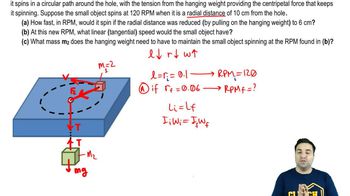Here are the essential concepts you must grasp in order to answer the question correctly.
Surface Charge Density (σ)
Surface charge density (σ) is defined as the amount of electric charge per unit area on a surface. It is typically measured in coulombs per square meter (C/m²). In the context of a cylindrical conductor, σ represents how much charge is distributed over the surface of the cylinder, which influences the electric field and potential around it.
Recommended video:
Charge per Unit Length (λ)
Charge per unit length (λ) refers to the total charge distributed along a length of a conductor, typically measured in coulombs per meter (C/m). For a cylindrical conductor, λ can be derived from the surface charge density by considering the surface area of the cylinder and the length over which the charge is distributed, allowing us to relate σ to λ.
Recommended video:
Spinning on a string of variable length
Gauss's Law
Gauss's Law states that the electric flux through a closed surface is proportional to the enclosed electric charge. This principle is crucial for analyzing the electric field around charged conductors. In the case of an infinitely long cylindrical conductor, Gauss's Law simplifies the calculation of the electric field and helps relate the surface charge density to the charge per unit length.
Recommended video:




